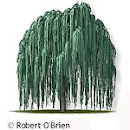An unused but apparently vintage wallet I recently picked up included two wallet-sized pieces of extremely cheap paper printed extremely cheaply with various features, warranties, seals, and an ID “card.” I scanned in the four images:

The American Designer Award for Finest in Leather. Impressive! Something tells me that perhaps there was no such thing, nor was there an entity called the “Leather Industries of America,” but perhaps I am being too cynical.


Now, where to find these “additional windows”...

Good to know that this is an “Approved” identification card. Or is it the bearer of the card who has been approved? And “card” is a stretch. These inserts are printed on some of the flimsiest paper I've ever encountered, several notches below newsprint.
In the vital stats section: Blood type. Good thinking, I guess.
Notice how the “Zip” is in a slightly different typeface? Looks like Helvetica regular as opposed to the condensed sans-serif used for the address blanks. (Typographers: In the condensed font, I notice that the a, y, and r have distinctively curved elements. Is this maybe the special font that Bell developed for phone books, designed to be legible at extremely small sizes? ) The addition of the “Zip” later on indicates that the original design of the insert dates from the pre-zip-code era, that is, before the early 1960s, but that the wallet itself is newer than that.
Basic standards of tomfoolery would of course require one to write in “Federal Bureau of Investigation” in the “Employed by” blank.
Maybe not the best idea nowadays to just give out your SSN to the random stranger who finds your wallet.
The American Designer Award for Finest in Leather. Impressive! Something tells me that perhaps there was no such thing, nor was there an entity called the “Leather Industries of America,” but perhaps I am being too cynical.
I
guess the warranty is as to the materials, not the workmanship or
construction. If the wallet falls apart in a couple weeks, that's on
you, buster.
(Two months in, the wallet seems to be holding together fine.)
Now, where to find these “additional windows”...
Good to know that this is an “Approved” identification card. Or is it the bearer of the card who has been approved? And “card” is a stretch. These inserts are printed on some of the flimsiest paper I've ever encountered, several notches below newsprint.
In the vital stats section: Blood type. Good thinking, I guess.
Notice how the “Zip” is in a slightly different typeface? Looks like Helvetica regular as opposed to the condensed sans-serif used for the address blanks. (Typographers: In the condensed font, I notice that the a, y, and r have distinctively curved elements. Is this maybe the special font that Bell developed for phone books, designed to be legible at extremely small sizes? ) The addition of the “Zip” later on indicates that the original design of the insert dates from the pre-zip-code era, that is, before the early 1960s, but that the wallet itself is newer than that.
Basic standards of tomfoolery would of course require one to write in “Federal Bureau of Investigation” in the “Employed by” blank.
Maybe not the best idea nowadays to just give out your SSN to the random stranger who finds your wallet.












